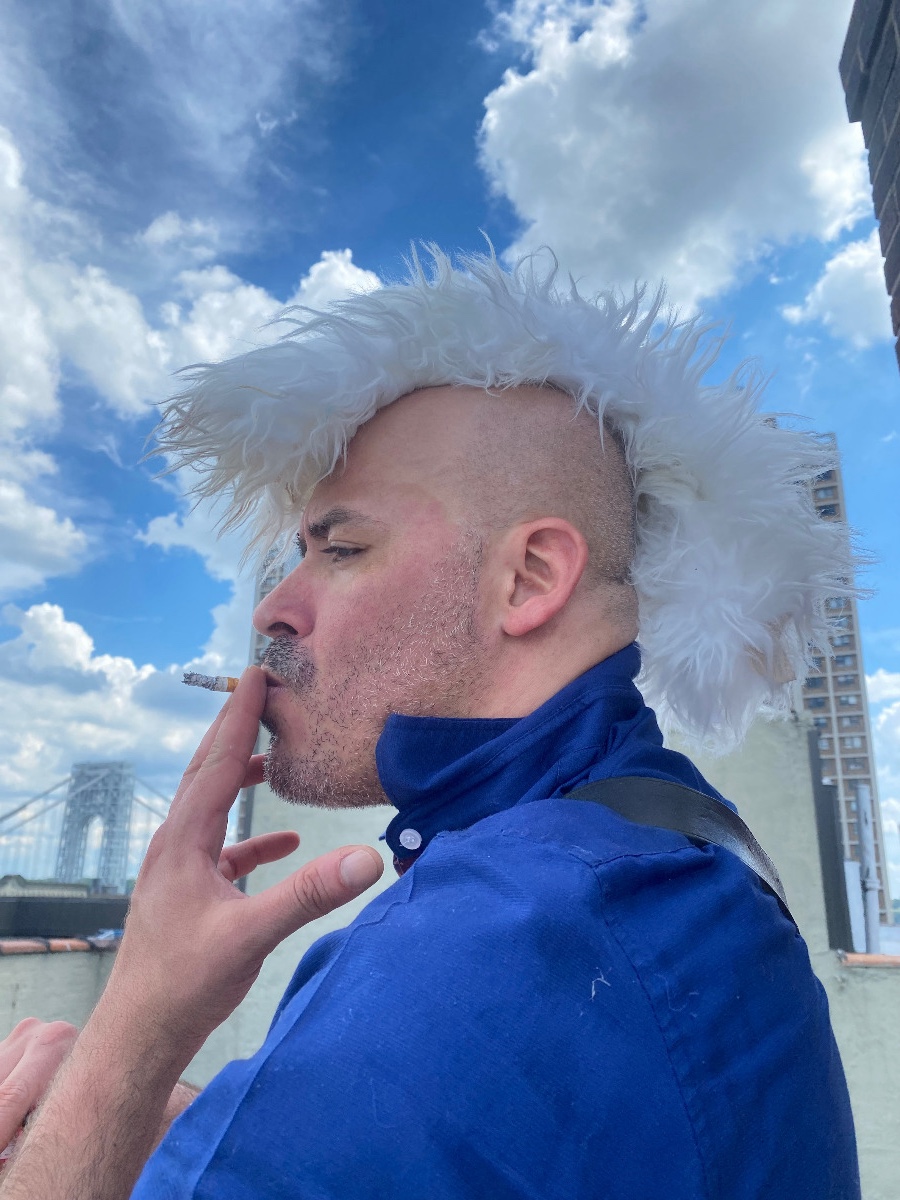Stopme Malkuth
Mutable Expression • Thermal Alchemist • Authentic Identity
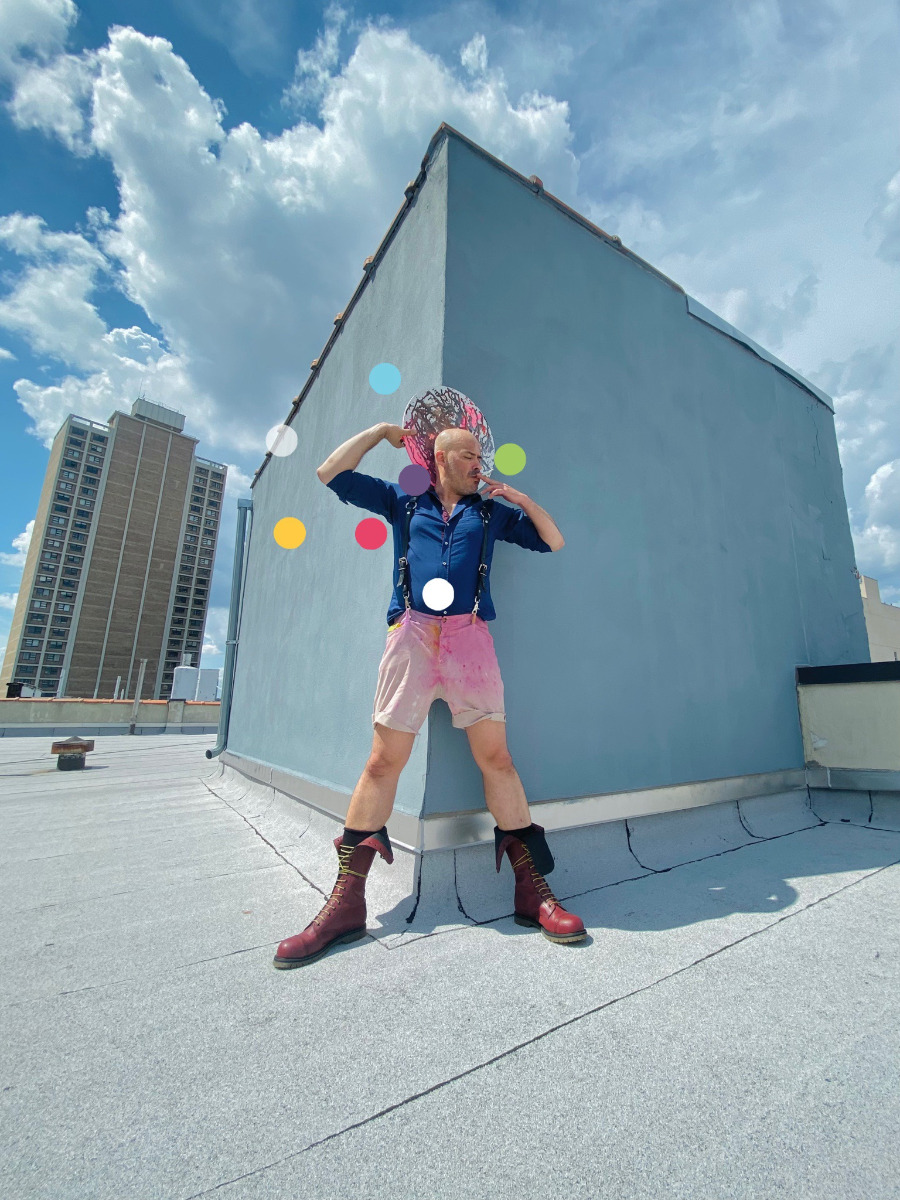
Picture this: a five-year-old in Brazil having existential crises over crayons while other kids happily colored inside the lines. Those waxy sticks that once tortured me? They're now my signature medium, because apparently the universe has a twisted sense of humor about these things. Fast forward through a pretty wild journey—at 15, I was prying open doors in Brazil's LGBTQ+ movement when most organizations were too scared to work with minors, convinced we'd somehow get them sued. By 19, I was assistant curator to Hugo Siqueira, organizing "HomoQueer Remixed"— Not imagining that this was actually Brazil's first queer art exhibition. Those curatorial years taught me everything: how art has a fundamental role to raise the voice of those in need, speaking a language that cannot be delivered using words. I was basically getting a PhD in art while helping other artists find their voices, never imagining I'd eventually need to find my own.
Then came the classic American dream detour. In 2011, I followed love to New York (we've all been there), just to watch my DJ dreams get buried by my ex-husband's spectacular ability to dismiss what it meant for me to trade my white privilege for the charming experience of being a Latin immigrant in a country where European descendants somehow feel comfortable telling the actual descendants of this continent's ancestors to "go back home."
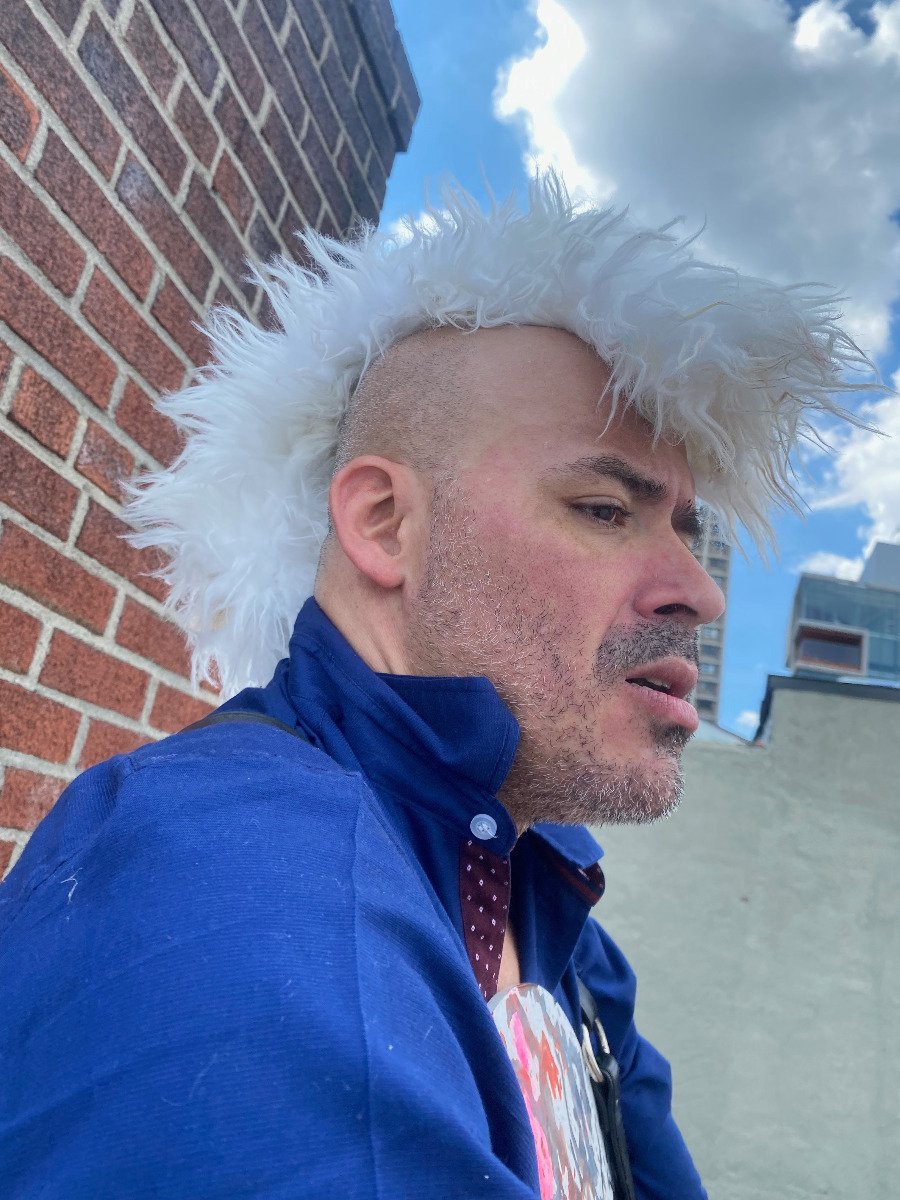
But here's where it gets interesting—after the traumatic summer of 2019 and early divorce proceedings, I naively believed 2020 would be my year of new beginnings. Apparently, the writers of my fate got replaced, turning my saga into a twisted blend of Twilight Zone meets Mexican telenovela with a side of CW teen drama plot twists.
On the early days of the summer of 2020, a joke became Sujeito Oculto" (Hidden Subject)—a Urban Intervention on Fire Island that was also part of my survival strategy. My ex was focused to "erase my existence", so, I converted the mandatory mask-wearing into an elaborated camouflage covering my face. Every daylight departure required a new mask constructed with whatever materials on my reach, becoming an exaggerated alegory that shielded my identity more reliably than it prevented COVID transmission. Soon some the local community was getting familiar with this interjection, starting to interact on each time they spotted me on the boardwalk. But not much later, my ex violently reacted, forcing me to end the project abruptely. He acted exactly when the "hidden subject" was becoming visible, apparently something my abuser feared more than my legal claims to marital assets.
Triple isolation became my reality: away from my family and friends, hidding to be kept safe from domestic violence, while I was kept gagged watching my own social cancelation after false accusations where made, literally removing me from my own home. But somehow, this perfect storm of oppression became the fuel that drove me to pick up a paintbrush for the first time. My first oil paintings were pure colorful emotional outbursts on canvas—beautiful disasters that reflected the chaos happening in real life, and my only outlet to express the suffocating reality I was held hostage.
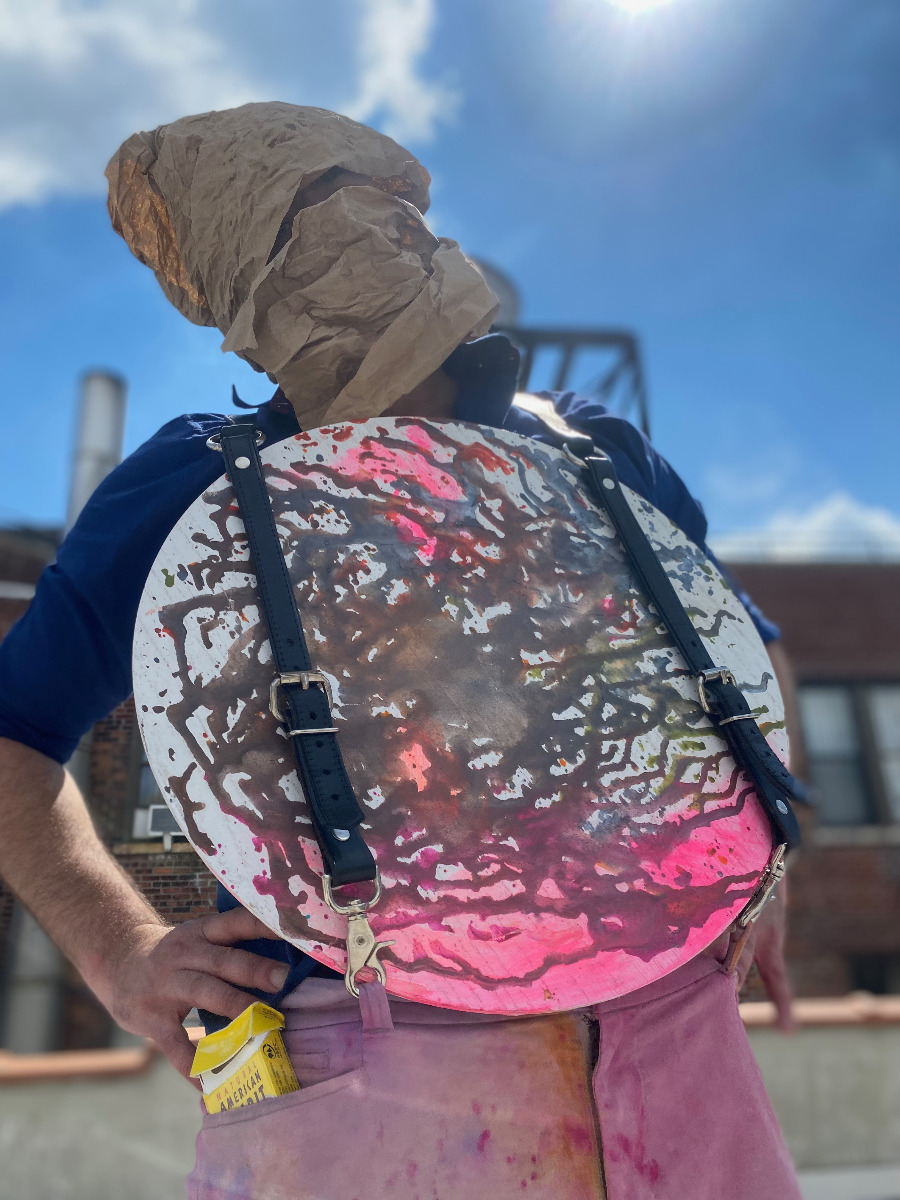
Soon a friend showed some techniques to melt crayons, and suddenly those childhood demons became my greatest allies. After testing the properties and behavior of the different brants and colors, I discovered about thermal dynamics: crayons melt at 105°F, but different pigments have personalities. Reds are drama queens who flow fast, blues are introverts that have a slow start, but may overcome the other colors once are fully released, yellows require space and must be kept away from strong tones, because they maintain transparency, unexpectedly being the most shy color of all. Understanding these properties lets me orchestrate what I call "controlled chaos"—I set the stage, apply heat, and gravity becomes my co-collaborator. It's like if Jackson Pollock had access to a heat gun, or if Lynda Benglis's floor pours from the '70s met a kindergarten art supply closet.
Getting a better control over the shapes led me to create a seried using flags of different countries, each carrying a political message. The piece was the flag of Brazil under Bolsonaro—with distorted lines and tones, like conflicted narrative of nationalism this man tried to promote, that . The American flag from my immigrant perspective asks whether patriotism includes transformation (spoiler: it does), while my Russia-Ukraine piece practically painted itself with aggressive reds invading peaceful blues. Following in the tradition of Jasper Johns questioning American symbolism or Ai Weiwei using traditional materials subversively, I'm asking: what happens to symbols under pressure?
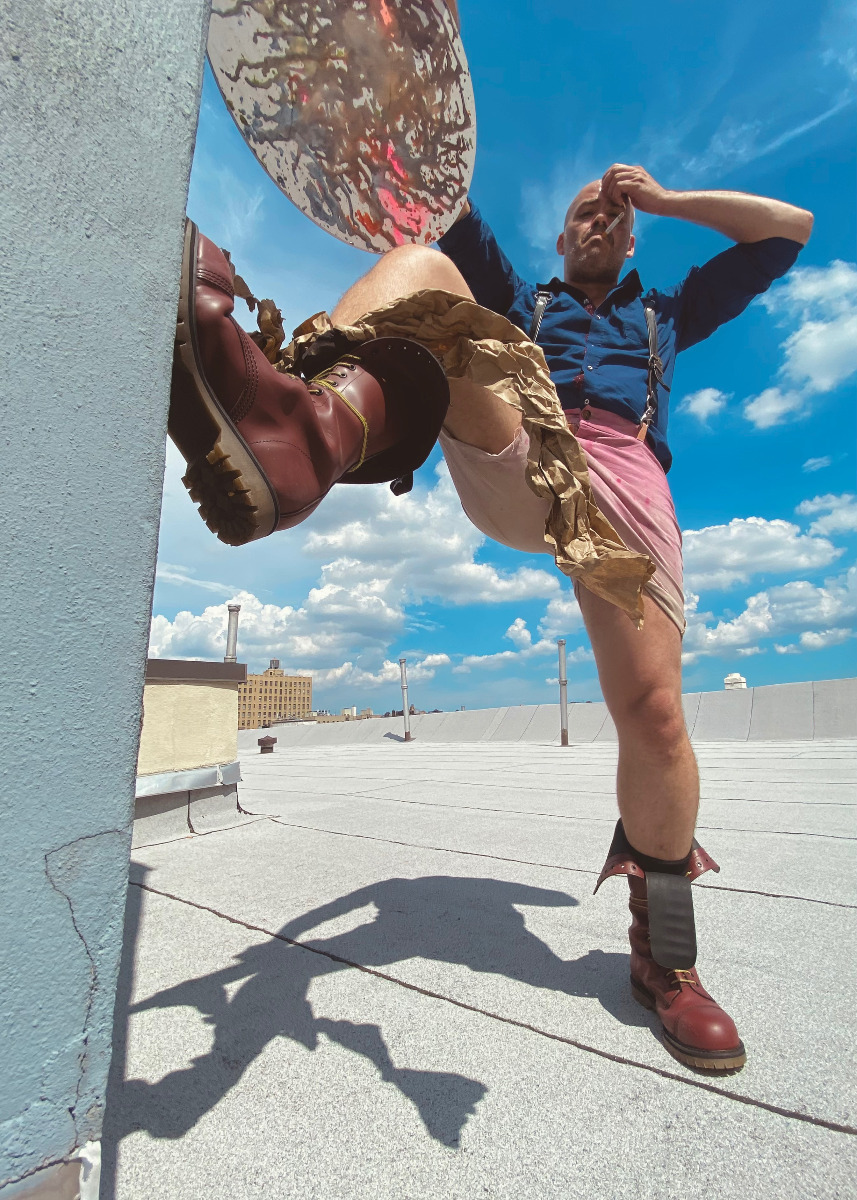
My current practice spans melted crayons, traditional acrylics (because you need solid foundational skills to break rules effectively), and photography where I manipulate camera statistics to reveal hidden worlds in ordinary objects—no post-processing, just pure optical trickery that would make Aaron Siskind's abstractions proud. Living between cultures as a gay Brazilian immigrant provides multiple perspective lenses: Brazilian warmth meets New York intensity, Portuguese precision meets English artistic discourse..
In parts, one of the main reasons I never explored my painting side was because I never got over the disastrous attemps to draw anything using crayons, back on my kindergarten. I would never imagine that the source of my trauma would become one of my favorite mediums. Because, now I melt crayons, transforming the vivid colors of hot wax on unique pieces. Each work is a mix of imagination, technique to use a heat gun as a brush, while studie of the properties of how the different brands and colors behave during the ligquid state, without mixing or disapearing before the corret position is set.
I discovered melted crayons not as nostalgic return to childhood, but as serious exploration of thermal dynamics as artistic medium. Temperature control became my language. Gravity became my collaborator. Time became my canvas. Working with national symbols - American flags, Brazilian colors - applying heat until rigid boundaries dissolve. Not destruction but transformation. Identity can be both permanent and fluid.
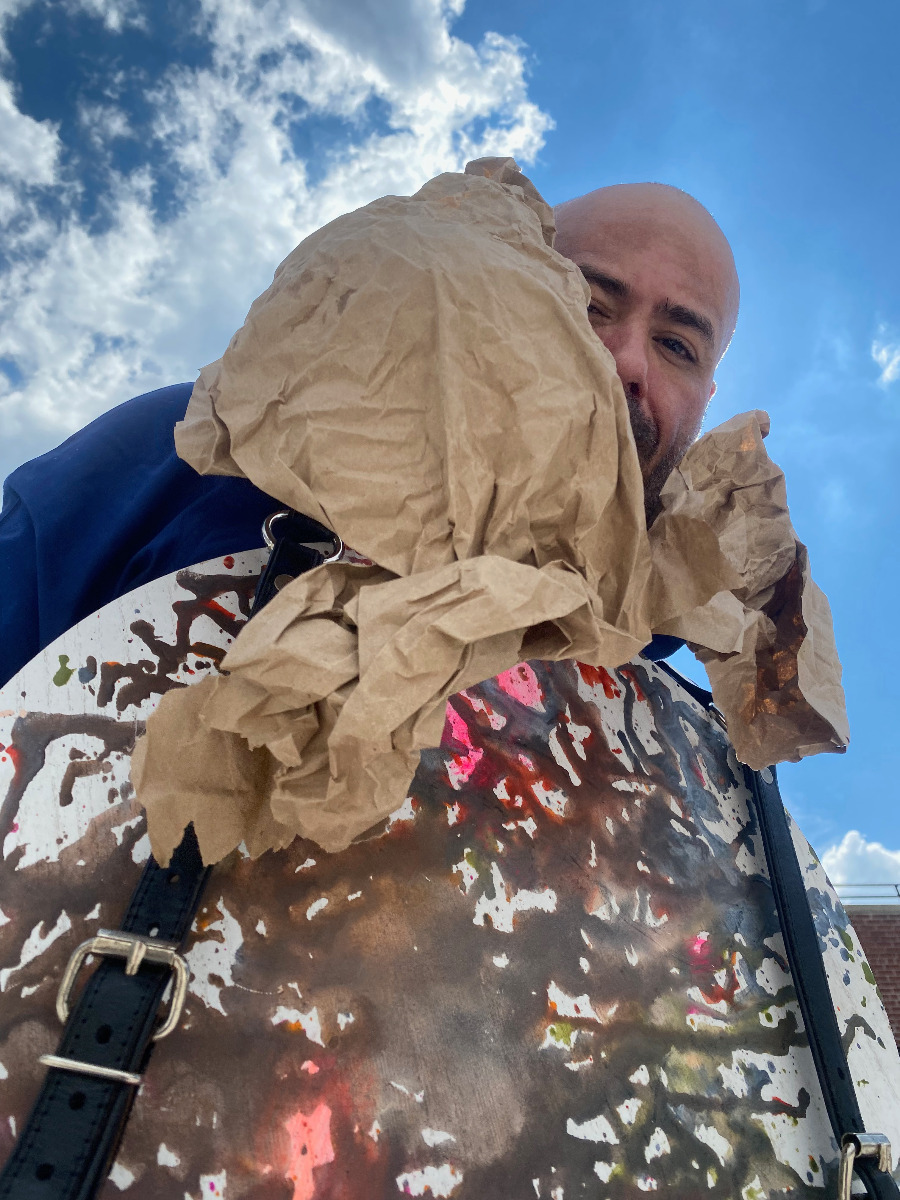
Lavoisier stated that nothing is lost or created but transformed into something else. My art flows with this mindset - whether melted crayons on canvas or identity performed in public space. I create work that raises questions instead of offering answers, instigating curious minds while confusing those attached to conventional designs.
Crayons represent democratic art materials - accessible, non-toxic, familiar across cultures. As an immigrant who understands material scarcity, I elevate everyday materials to fine art status, questioning hierarchies about what constitutes "serious" artistic media. From organizing Brazil's first queer art exhibition to finding my own voice through thermal dynamics, my journey proves that art finds a way.
Right now, I'm navigating the delightful maze of divorce proceedings while wondering if I'm creating legitimate art or just having a very expensive therapeutic breakdown with excellent documentation. My studio is controlled chaos—heat guns next to delicate brushes, safety equipment (fire demands respect). I'm in a decisive moment trying to find opportunities to promote my work, what may be by trying to secure grants for artists who may or may not qualify as "emerging" versus "completely winging it," and secretly hoping someone with actual art world credibility will tell me this isn't just elaborate hobby.
